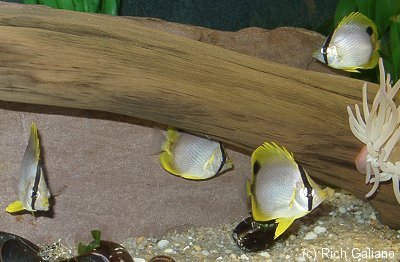Aquarium Guide - Tank

All aquaria today are constructed of tempered glass, with silicone seals and plastic frames, or entirely of clear acrylic. This is exactly the way they should be constructed, and it is hard to go wrong with a new tank. If possible, you should leak-test a new tank for a few days outside or somewhere where a little dripping water will do no harm, but the incidence of leakers is really very low. If you use cold water, expect condensation all over the glass until it warms. This is not leaking; just dry it off with a towel. Aquarium glass will scratch. You should always be gentle when moving the gravel or stone decorations inside the tank. Acrylic scratches very easily, and for this reason, along with the high cost, I would avoid it.
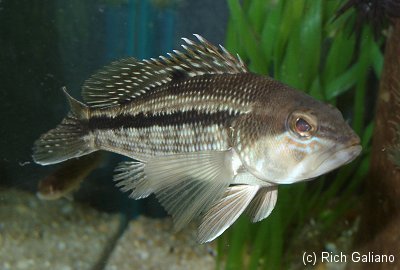
The carrying capacity or the number of fish you can keep in a tank is determined by its size and shape. Obviously, a larger tank will hold more fish, but there is more to it. Oxygen is usually the limiting factor in carrying capacity, and oxygen enters the water at the surface of the aquarium. Therefore it is the surface area of the tank, rather than the overall volume, that really determines how many fish you can keep in it. Because of this, very tall narrow tanks, like some of the hexagonal models, should be avoided.
Water circulation can double or triple the carrying capacity of any fish tank, but only when it is on. If the filter on an overstocked tank fails for any period of time, you could lose some or all of your fish. It is good to have a small air pump as a backup for just such emergencies. This is actually a pretty rare event, and normal downtime for cleaning will do no harm.
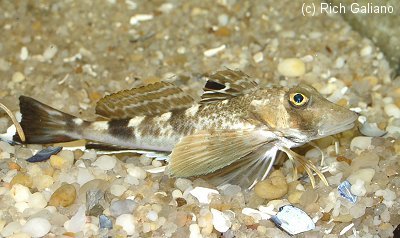
You can find many formulas for calculating just how many fish you can keep in a particular sized tank. These are based on tank dimensions, fish size and type, etc. I routinely stock my tanks to much higher densities than any of these formulas would allow, and the fish suffer not in the least for it. I would say the best formula is experience. Stock your tank slowly, and as long as the fish look happy and healthy, you are OK.
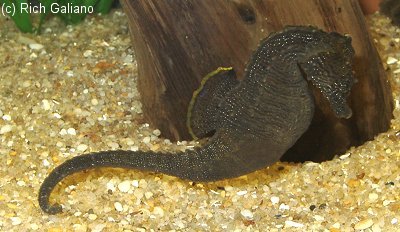
A great deal depends on the personality of the fish you keep. Very active types can drive each other to madness if overcrowded. In other types, their natural territoriality may be magnified by the close quarters to the point that they may become holy terrors, such that anything more than one in a tank is overcrowding! This clearly has nothing to do with oxygen levels. Experience is the best guide in this matter, and in any case, go slow. Some indications of overcrowding are: ragged fins, skin lesions, gasping at the surface, weight loss, manic behavior, fetid odors, and death. Not that much different from people.
Large tanks tend to be more stable than small ones, in terms of temperature and water quality. A small tank can go bad very quickly and become a total loss, whereas a large tank will give more warning of such problems. In this way, large tanks are more forgiving. Small tanks should therefore be stocked more lightly than large ones, and if you are just starting out, try to get 20 gallons or more.
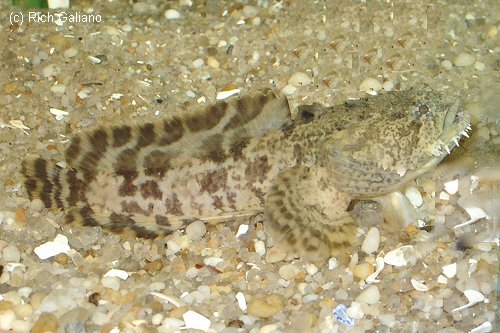
Apart from the fish, another major concern with aquaria is weight. For simplicity, I estimate an aquarium weighs 10-11 pounds per gallon. Thus, a 55-gallon aquarium will weigh around 600 pounds. Since this weight is spread out over the area of the tank, it should be well within most floor design specifications. However, over the long term, a wooden floor may begin to sag under this load. To minimize this, try to locate large tanks in corners, or near walls, or above supporting walls in the floor below. Small tanks can be placed on ordinary furniture, but remember 10 gallons = 100 pounds. Anything more than this should be placed on a properly constructed stand.

Remember, an aquarium is full of water, and routine activities are bound to spill and splash it around. This can result in watermarks and stains since it is often impossible to move a tank to clean under it. Therefore avoid placing an aquarium on any expensive furniture or carpeting. Also, should a small leak ever develop, anything you keep below the tank could be ruined, so don't put anything valuable there.
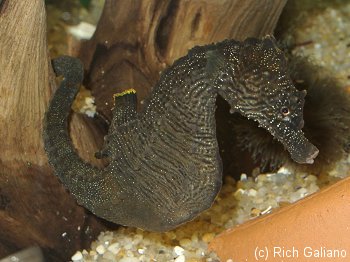
Tanks larger than 20 gallons should never be moved unless completely empty. Tanks 20 gallons and smaller can be moved without breaking them down by draining as much water as possible and removing heavy objects, like filters, large rocks, etc. You can leave the fish in the tank for short trips, and save the water for refilling in the new location.
While we are here, a word on the all-in-one starter kits you may find in the stores: some of them have pretty good components, most of them do not. If you have a friend who knows the difference, bring him/her/it along. Luckily, the better stuff also costs more, so in this case, the salesman will happily steer you in the right direction. Don't start out with junk.

